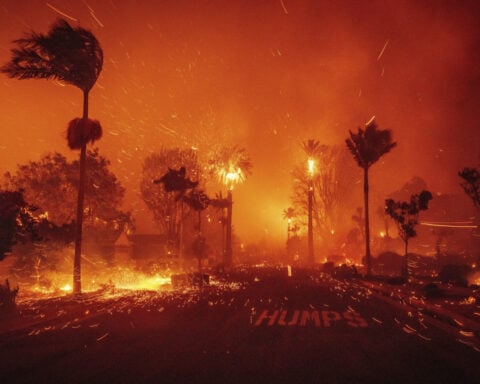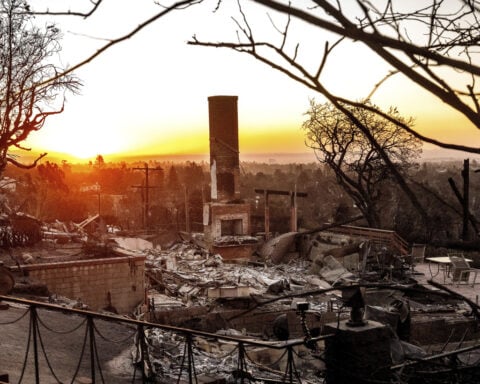By Scott DiSavino
(Reuters) - U.S. demand for power hit a preliminary hourly record high on Monday as homes and businesses cranked up their air conditioners to escape a brutal heat wave blanketing most of the Lower 48 states on the hottest day so far this summer.
Extreme weather reminds consumers of the fatal freeze in February 2021 that left millions of Texans without power, water and heat for days and a brutal heat wave in August 2020 that forced the California power grid operator to impose rotating outages that affected about 800,000 customers over two days.
Power demand on Monday peaked at a preliminary 743,995 megawatts (MW) around 6 p.m. EDT (2200 GMT), which would top the current all-time high of 742,704 MW set on July 20, 2022, according to data from the U.S. Energy Information Administration (EIA) going back to 2016.
Temperatures across the country averaged around 82.1 degrees Fahrenheit (27.8 Celsius) on Monday, the most since averaging 82.2 F on July 27, 2023, according to data from financial firm LSEG going back to 2018. That compares with a record average of 83.0 F on July 20, 2022.
High temperatures in the biggest cities across the U.S. hit 91 F in New York, 83 F in Los Angeles, 91 F in Chicago, 95 F in Houston and 109 F in Phoenix, according to meteorologists at AccuWeather.
On Tuesday, AccuWeather forecast the mercury would reach 97 F in New York, 83 F in Los Angeles, 80 F in Chicago, 95 F in Houston and 110 F in Phoenix.
With even hotter weather expected in the U.S. Northeast on Tuesday, next-day power prices in New England and the Pennsylvania-New Jersey-Maryland region soared by over 150% to their highest levels since January, according to pricing data on the LSEG terminal.
Electric grid operators across the country declared hot weather alerts over the past week and told energy companies to put off unnecessary maintenance so all available generating plants and power lines would be ready for service.
But despite the extreme heat, grid operators have not taken more extreme actions to manage supply and demand - like calls for conservation or rotating outages - and none were currently projecting power use would break all-time highs.
(Reporting by Scott DiSavino; Editing by Chizu Nomiyama and Franklin Paul)

 Germany sees meat exports to EU continuing after foot-and-mouth case
Germany sees meat exports to EU continuing after foot-and-mouth case
 Parliament speaker to lead Taiwan delegation to Trump's inauguration
Parliament speaker to lead Taiwan delegation to Trump's inauguration
 German economy contracted 0.2% in 2024
German economy contracted 0.2% in 2024
 Middle East latest: Palestinian prime minister says Palestinian Authority should run Gaza in future
Middle East latest: Palestinian prime minister says Palestinian Authority should run Gaza in future
 Nokia signs multi-year patent license agreement with Samsung
Nokia signs multi-year patent license agreement with Samsung
 Irish parties secure 'comfortable majority' for new government
Irish parties secure 'comfortable majority' for new government
 Bayern Munich signs US youngster Bajung Darboe from LAFC
Bayern Munich signs US youngster Bajung Darboe from LAFC
 Novak Djokovic breaks a tie with Roger Federer for the most Grand Slam matches in tennis history
Novak Djokovic breaks a tie with Roger Federer for the most Grand Slam matches in tennis history
 China's RedNote: what you need to know about the app TikTok users are flocking to
China's RedNote: what you need to know about the app TikTok users are flocking to








